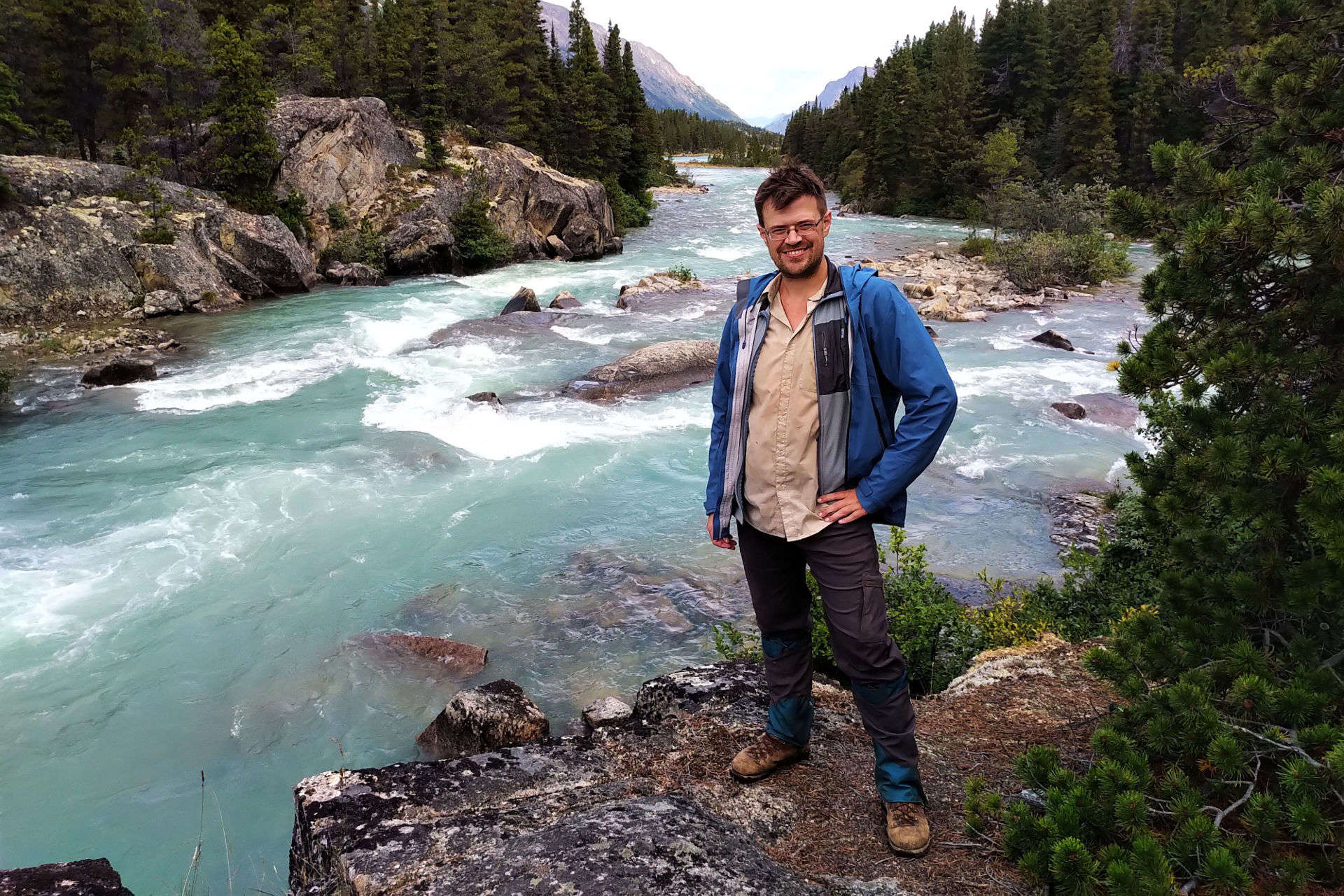I want to write more, I really do, but it’s hard. I just don’t hike that much, and when I do it’s often not worth writing about even to me.
In this situation, what do other hiking blogs do? That’s a bad question because all hiking blogs, and vlogs, and Instagrams are terrible attention-seeking nightmare factories that seem to dream of being sponsored by a company selling bandanas or something just so they can experience the sheer joy of selling out. I like adorable half-polished diaries of hikes, and I like Andrew Skurka’s site, but I’m posting all the half-polished diaries I can and Skurka’s site is good because he’s an expert full-time hiker and guide, which I most definitely ain’t. Damn.
But people write about gear. A lot. By gear, a hiker does not mean the kit he uses to inject heroin into the diminishing veins between his toes, although he’d save money if he did. He means the specialized, lightweight equipment that he weighs on his kitchen scale so he can tell everyone he’s some awesome minimalist who wastes not an ounce. I am not an awesome minimalist. I bring a chair hiking.
I also carry opinions, and they don’t weigh anything. Some of them might almost be interesting to others, and some will be good for me to write down so I don’t go “oh right my satellite messenger failed last time I tried this” sometime in 2022. Hey, perhaps a gear post now and then is a decent waste of electrons!
Two-way satellite messenger: Garmin inReach Mini
Since I’m planning a two-week hike next year, I thought a satellite messenger might reassure loved ones that I wasn’t dead. Once, that meant expensive gizmos aimed at professionals, but no longer. There’s the Bivy Stick, which looks like a flash drive for some reason. The SPOT X looks like an old Blackberry phone. The Somewear Global Hotspot, which looks like a featureless black puck I’d leave behind at an airport, and the Zoleo Satellite Communicator, which looks like one of those memory games kids played on long car rides in the ’90s, are also there. I did a good deal of reading on these options then got the same one everyone else does, an orange Garmin inReach Mini.
Partially out of comfort; I speak fluent Garmin1. I got it on sale and Garmin’s plans seemed not conspicuously worse than others for how I was using it. I trusted the inReach’s hardware: a little rubberized rectangle with a thiccc antenna feels safe on my backpack. inReach’s Iridium satellite network has nearly worldwide coverage, while the Globalstar network used by SPOT isn’t available in northern areas I have hiked in and might again. The Bivystick was not available from Canadian retailers at the time, which would have been thorny if I needed warranty work2, and I forget why I didn’t like the Zoleo but I didn’t. Garmin even owns the (for-profit) emergency response organization that the SOS button calls3.
And the Mini is so perfect and tiny. It felt great hanging from my shoulder strap and after the first day I never worried about it. Being small is great for portability, but its size also makes it feel less likely to be awkwardly caught against a tree or beneath a stumble. The inReach Mini has a total of six buttons: power, SOS, up, down, OK, back, and a tiny screen on which you can reasonably read short messages. This is all you need. Firing off a preset message from the on-device menu does not take long: for longer, custom typed messages, use your cell phone and a Bluetooth connection. It is physically possible to type a message on the device, using the arrow keys to select each letter, but only just. This will do for near-emergencies: “fone broke, leg hurt, pick me up at parking lot” might take fifteen minutes to type but that’s fifteen minutes you have.
Here are the actual problems. First, trees can obstruct communicating with a satellite in space. Who knew? Hiking lower elevations on Vancouver’s North Shore means long delays on messages, though a success is accompanied by a very satisfying, morale-boosting chirrup! In less-dense brush, transmission seems quick and easy.
Second, you don’t just get a phone number. You have to initiate contact, and then your contacts can reply by text message or through a web portal. inReach users can send inReach-to-inReach messages but ordinary texts or e-mails go to disposable addresses that are, eventually, disposed of. So if you want your boss to be able to send you work messages on the trail, you have to message your boss first. Some may consider this a feature. I can live with it.
Third, I sent my girlfriend eight messages last time when I was hiking for a week and though my inReach, my phone, and the web service all swear they were sent, she didn’t get any of them. This hurts the whole “provide peace of mind” thing. Other people got messages and replied to them, and on returning home I found an error report that was probably related. We tried again with map-links disabled after I got home and they went through, so if providers are marking messages with inReach map links as malicious spam not to be forwarded that would explain a thing or two.
Information technology is stupid, so in principle this could happen to any device by any manufacturer. But it happened to me, and I was using a Garmin inReach Mini. Keeping the maps off for reassurance messages from now on.
Elderly solar panels
I already did this article. Short version: took them to the mountain and they sucked less totally than I expected!
Water filtering: Sawyer Squeeze with two CNOC Vecto water bags
I’m a long-time unpaid shill for the Sawyer Squeeze water filter. It’s small enough and light enough to fit in a pocket, it has a high enough flow rate to drink on the go, and it seems robust. The Sawyer Mini is lighter, but flows so slowly I have seen men driven to madness by it. There are different concepts, like UV light, tablets, traditional dip-it-in-the-lake-and-pump filters, and the old standby “drink the water and don’t worry,” but out of all I’ve tried the Squeeze is my favourite. It’s also affordable; cheap enough that we have a spare one for the household emergency kit.
The Sawyer has a universally-recognized flaw, which is that the standard Sawyer bags are both awful and fragile, which is a sub-ideal combination. The best known replacement is an ordinary Smartwater bottle, since they’re cheap, less awkward, no flimsier, are available at every convenience store, and the threading juuuuuuuuuuuuuuust about fits the Sawyer. You will see one to two of these per thruhiker on every long-distance trail in North America.
As I hike heavier than that, I’ve been taking out a pair of CNOC Vecto water bags. They were fun to get, here in Canada; I had to order mine from a hammock shop in Portage-la-Prairie.
CNOC’s bags, though not cheap, pack up nicely, and are more convenient in use, with a large zipper opening on one end that lets you grab all the water you need, and a small threaded opening on the other for the Squeeze to screw on. Durability after a couple years is doubtful. One of my Vectos acquired a pinhole while in storage that I found at camp one day; I was able to patch it with a classic Tear Aid Type A patch applied to the dry inside of the bag, and that worked well in the short term but no longer. Since then I have nearly swallowed two Type A patches that got loose from what had felt like perfect repairs.
That said, when they work they work. While hiking, I can suck my water out on-the-go without even taking my pack off in the way that endeared me to the Sawyer from trip one4. In camp, I use two female adapters that Sawyer sells and a yard or so of 10mm hydration bladder tubing, screw my Squeeze up to the dirty bag, hook the tube to the output end of the squeeze and to the clean bag, and then I have a gravity filter, at the cost of carrying an extra 4.6 ounces around for the tube and extra bag, plus some trivial amount in cord5. Gravity filters are great, except when you’re hiking and need water en route. I now have one filter that not only does both but is good at them; it leaks some but not enough to care about. This is the kind of lightweight thinking I can get behind.
| Comparison of hiking/gravity filters | ||
| Filter | Weight | Cost (CDN$) |
| Sawyer Squeeze, as advertised | 3.0 oz | $45.49, Amazon.ca |
| Sawyer Squeeze, with 2L CNOC Vecta | 3.7 oz | $75.48, Amazon and Hofman |
| Sawyer Squeeze, CNOC gravity setup | 8.3 oz | $110.45, various sources |
| MSR TrailShot, as advertised | 4.9 oz | $68.95, MSR.com |
| MSR Trail Base, 2L, as advertised | 1 lb 2.3 oz | $189.95, MSR.com |
By comparison, look at MSR’s solution, the Trail Base filtration system. The 2-litre model weighs 13 ounces more than the standalone TrailShot filter and costs a fortune. To be sure, the MSR system is more cultured: less annoying to connect and I doubt their tube is secured by four zip ties. Mine leaks a bit because it turns out my zip ties aren’t plumbers’ grade. But that’s a substantial gap in mass and price, even if the Sawyer Squeeze wasn’t better than the MSR TrailShot for drinking on the go which it is.
Bag with clothes in it
Outdoor Research is selling a dry bag with an opening on each end, so you can shove clean clothes in one end and dirty clothes the other, and keep them separate, and as you move them from one end to the other the bag stays the same volume, so if you prop your pillow on top of your clothes bag at night as I do you remain comfortable all trip long. This is a great idea! And it better be a great idea because it’s a CDN$50 stuff sack!
If you’re going to spend $50 on a clothes bag, why? But this is the one to get. Better than a night at the pub. And for me the ability to keep a set of clothes clean for the post-hike commute while not adjusting two bags under my pillow all night is (ashamed mumbling) probably worth the money.
Backcountry chair: Helinox Chair One
The chair I like so much I put it in the logo. A two-pound (!!!) piece of aluminum and polyester that does nothing but be a chair. Those little squares of sleeping-pad foam people bring with them weigh less than the electricity for this website does, and here I am carrying a two-pound sack I have to clip to the outside of my backpack just so I can take the load off my l’il feetsies? How dare I?
My Chair One goes with me everywhere my tent does, and someone always gets jealous. I play it off by saying “you don’t have to carry it!” but really I’m smug. Smug, and snug, as a bug in a rug. Sure, I usually go to fairly cultured camping areas, with picnic tables, but those are just in the food area. Do you fully appreciate how nice it is, after a long day, to set up my tent, get camp ready to go, plop down in my chair, and read a good book until dinner time? And when there aren’t picnic tables, or I need to eat now but the tables are full, forget about it.
It’s really nice.
Lots of people agree, since when I bought it the Chair One was an eccentric little concept and now Helinox makes it in fifty colours while knockoffs flood the value market. Helinox also appeals to those who want to save weight with their Ground Chair, made of similar materials to the Chair One but sitting quite a bit lower, and the Chair Zero, of a similar layout to the Chair One but made of lighter-weight polyester. Both shave nearly a pound off the packed weight of the Chair One.
Why haven’t I downsized? The Ground Chair does not appeal at all. The Chair One is already a bit low for a 5’11.5″ hiker. It’s very comfortable, but the drop is just enough that I notice it. The Ground Chair, even in the store, is a full-on squat to get in or out of. Pass.
The Chair Zero seems nice, and if I was buying a chair for the first time I might pick it up. But people who’ve tried both over long trips say it hits a bit different. The lighter polyester, while still comfortably capable of holding even my capacious caboose, doesn’t sit quite right in the derriere. The poles are also that little shade more fragile. And much though I’d like to save a pound, dropping a hundred and eighty of my Canadian dollars on something that’s a bit less comfortable and a bit less reliable than what I have feels unjustifiable.
The well-known flaw with Chairs Zero and One is that the legs bury in loose surfaces, meaning anything from sand, to dirt, to grass, to pebbles, to your average earthen tent pad. After a half-hour of comfort one gets that sinking feeling, and one leg is higher than the other three, and then you get out and it tips over. The cure is either to get a ground sheet, adding five ounces to your pack and a bit of faff to your setup, to put tennis balls on the feet, or to pick up the chair and move it once in a while. I opt for the latter course. It’s really not much trouble, and if you’re anything like me you’re getting up and walking around camp anyway, making dinner, grabbing items, looking at the scenery and making happy noises.
- If this seems goofy to you, you’ve never said “I forgot to load my trip maps onto my GPS watch, the only computer near me is running a five-year-old Linux distribution, and I leave tomorrow morning,” like I did last trip.
- It is now available from MEC, but at a premium against the inReach.
- Pretty much every Iridium emergency beacon uses GEOS, and started doing so before Garmin bought GEOS in 2021. Should non-Garmin customers be scared? Probably not.
- The flaw in ordinary use with the CNOC bags is, I think because they’re thicker, more stretchy, and more durable than the Sawyer bags, they are harder to squeeze water out of. It’s a bit annoying, but can be mitigated to a degree by having as little air in the bag as possible.
- The Squeeze, when I got it, came with one such adapter, and I poached a second from the emergency-kit filter. If you want to save the trouble you could have the hydration tube dangle free into your water receptacle.



